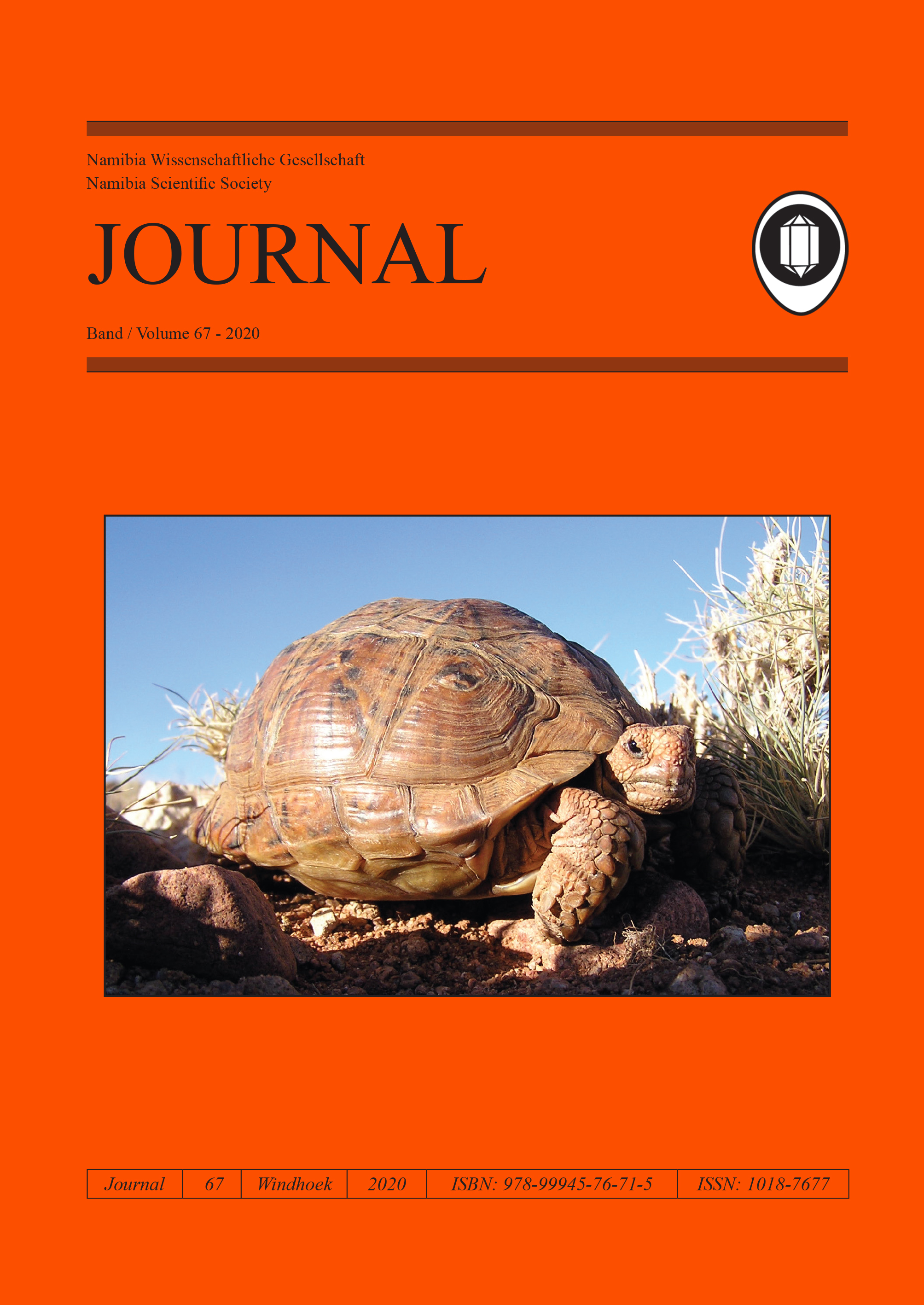Seeing and Remembering: Rock Art Sites at the Farm Krumneck in the Khomas Region of Namibia
Keywords:
Rock art; rock engravings/petroglyphs; Khomas Region; Krumneck; landscape archaeology; panels/panoramas; shamans/shamanistic; dating of rock art.Abstract
Namibia is world-renowned for its many archaeological sites and treasures. This rock art, both paintings and engravings or petroglyphs, hase been extensively documented and researched for over a millennium. The epicentre of research has concentrated on the apex sites such as the great massif of the Daurês/Brandberg with many thousands of paintings and fewer engravings. Other localities that have been well researched include, among others, the impressive Erongo Mountains, the World Heritage Site at ǀUi-ǁaes or Twyfelfontein, the granite Spitzkoppe that towers over the desert floor, the engravings and paintings of northern Damaraland and Kaokoland in the Kunene Region, the paintings and engravings of southern Namibia right down to the Orange River and the engravings at the farm Margaretental near Witvlei, east of Windhoek. More recently extensive documentation and research of several thousands of paintings and engravings are ongoing at Mikberg and its environs in the Kunene region. More recently approaches to the study of rock art have evolved from considering single paintings or engravings towards seeing these as belonging to panels or panoramas. Landscape archaeology has been another more recent innovation, while dating has benefited from new technologies. What is also relatively recent, are attempts by researchers to engage local communities and trackers in their efforts to conserve and interpret the meaning and socio-cultural relevance of particular paintings. Compared to other regions of the country, the Khomas region has been relatively under-researched. This is despite its size of 36,861 sq.km or 4.47 per cent of the total land area of 824,116 sq.km, its demographics with an estimated population size of about 430,000(2018) and its economic, political and cultural importance to the country. Moreover, the region has more than 330 known rock art sites, all on privately-owned farms. The last region-wide published survey of rock art was done by Peter Breunig in 2014 and by the late Dr Ernst Rudolf Scherz in 1986, respectively. Other important and innovative archaeological research has been and is being undertaken by private archaeologists, notably by Dr John Kinahan, Mr Goodwin Gwasire of the University of Namibia (UNAM) and by Dr Alma Nankela of the National Heritage Council, while German researchers such as Professors Peter Breunig (Frankfurt am Main) and Tilman Lennsen-Erz (Cologne) also collaborating with Namibian-based researchers, continue to research rock art in the country at more than one site. While my personal interest in Namibian rock art dates back to 1967, I started documenting rock art in the Khomas region intermittently a decade ago, and have visited 55 of the more important rock art sites. The work continues on a modest scale and is
entirely self-funded. This brief article is an attempt to highlight some of the lesser-known sites on the private farm Krumneck, and to emphasize their importance for the heritage of humankind. Some generalisations that may hold for other rock art sites in the region will also be advanced in the conclusion. An in-depth exploration of their diverse meanings falls outside the purpose and scope of this cursory contribution.


